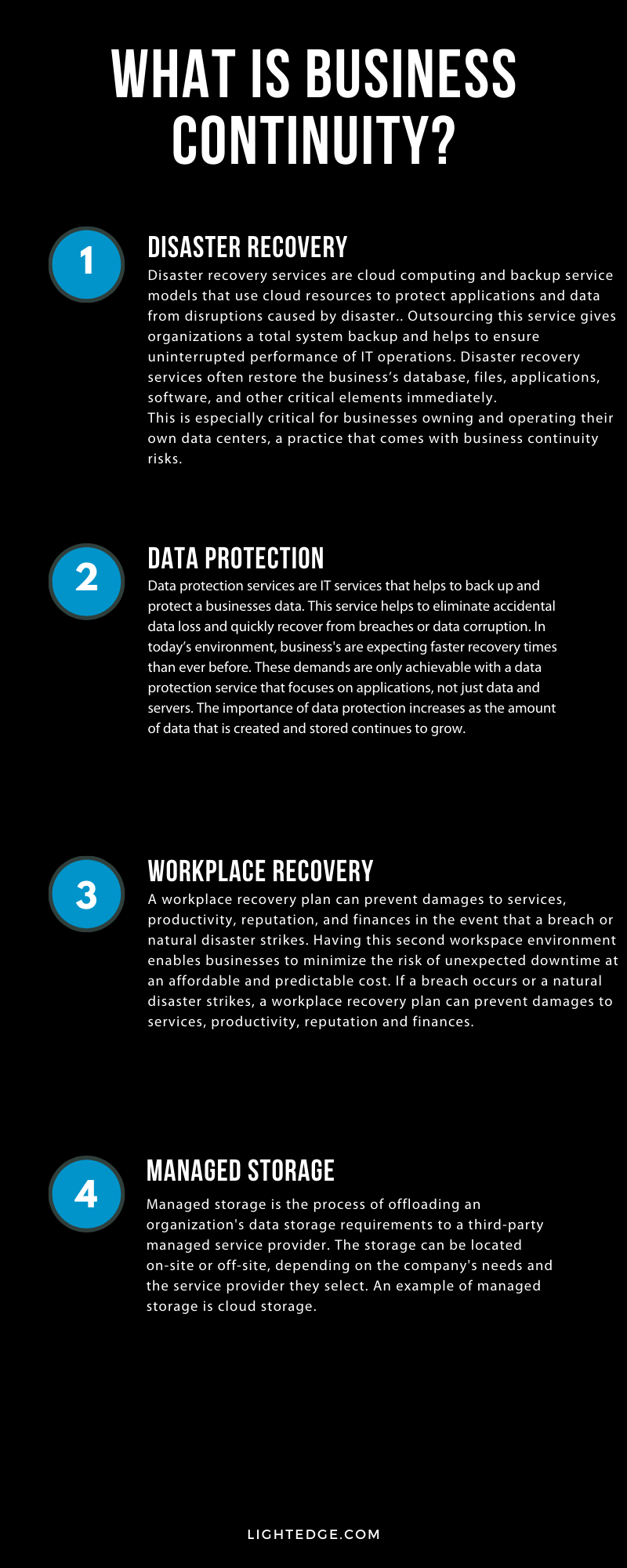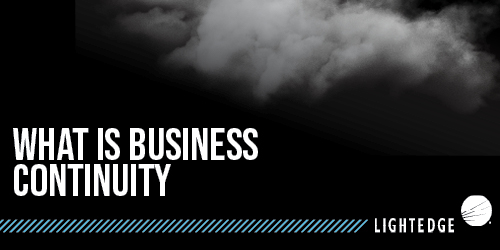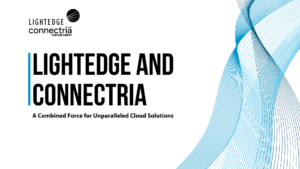Prior to COVID-19, business continuity was a growing concern for organizations. Risks such as fire, flood, security incidents, data breaches, and even extremes like terrorism, were concerning. COVID-19 brought business continuity to a whole different level. Organizations had to shuffle resources to ensure employees were still equipped to perform their jobs without limiting their services. Prior to the pandemic, most assumed that in the case of a physical “emergency” employees would be moved to a different location. Flash forward to today, organizations now have to ensure that virtual options are on the table. In addition, organizations are struggling with supply chain disruptions, workforce limitations and economic hardships. All of those aspects can make not having a business continuity plan, even more concerning.
LightEdge’s experts have compiled a consensus set of defined aspects that make up a business continuity plan and why it is so important to have one in place.





